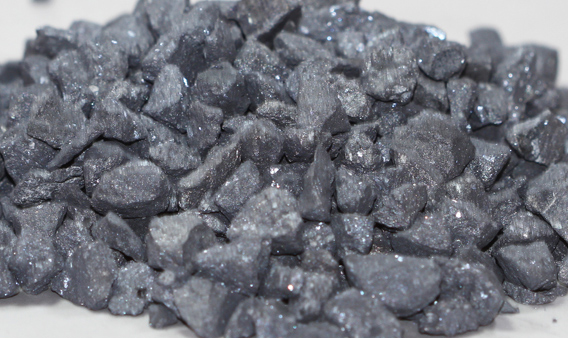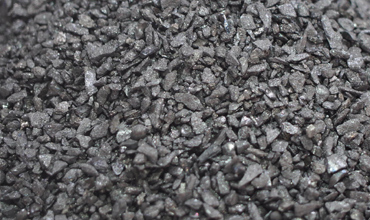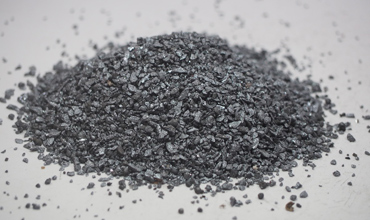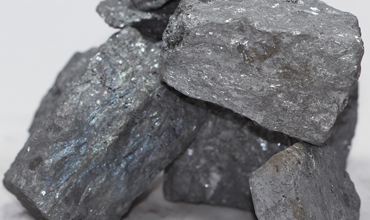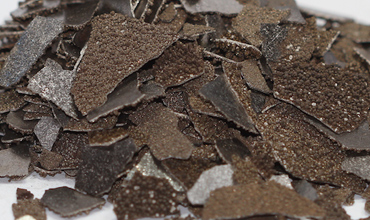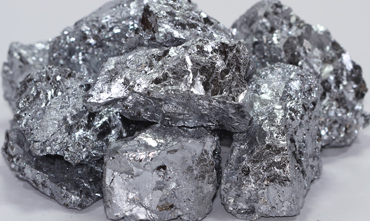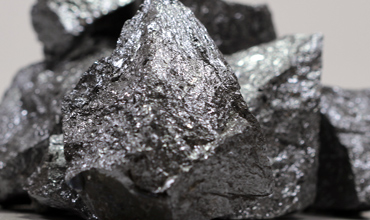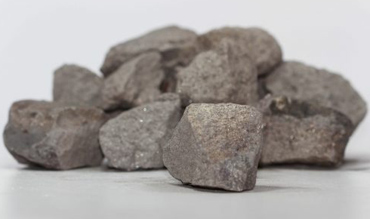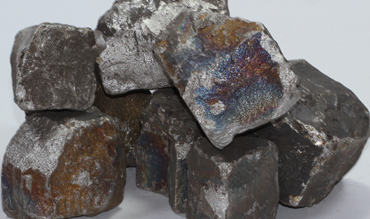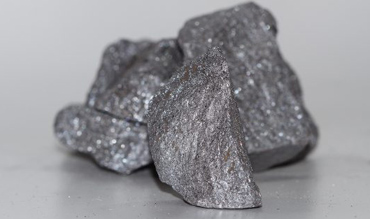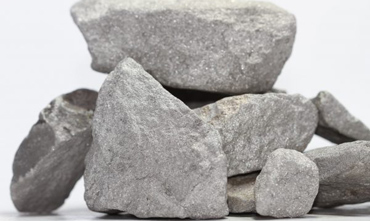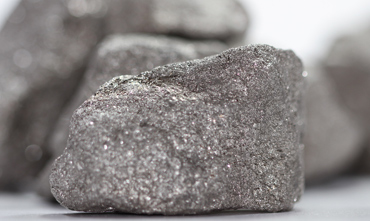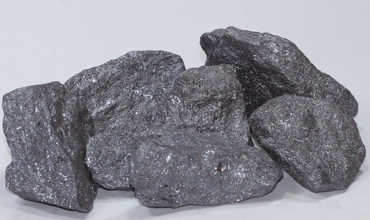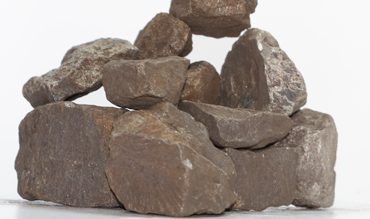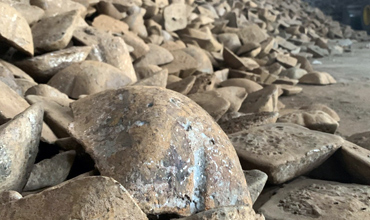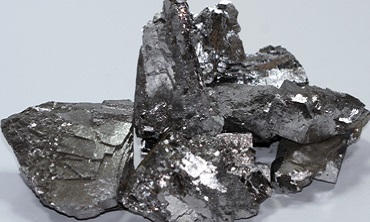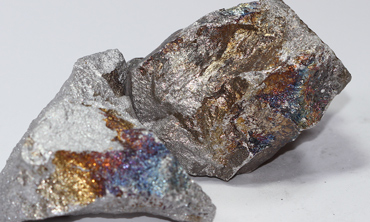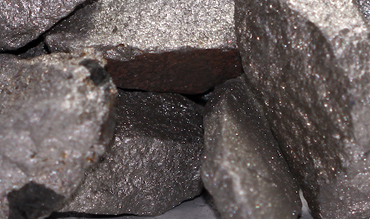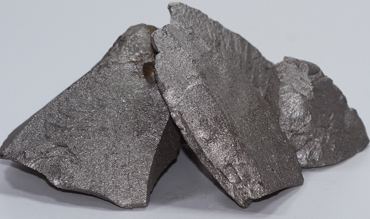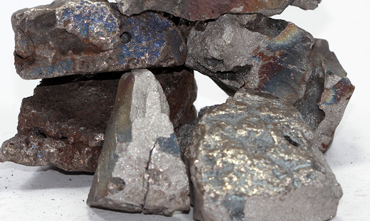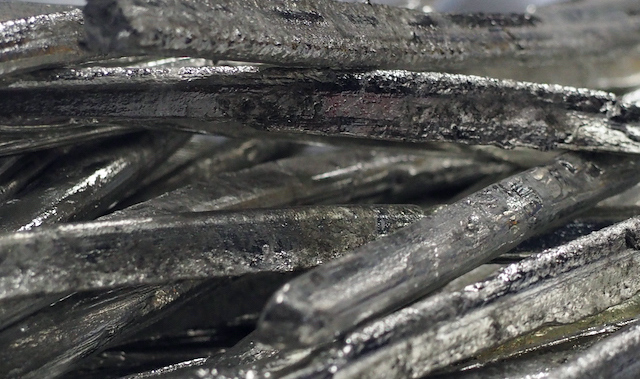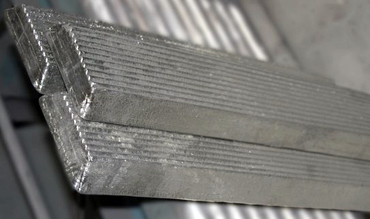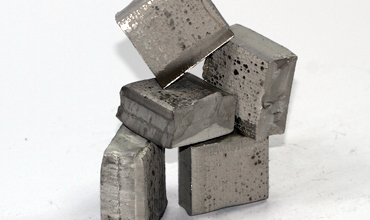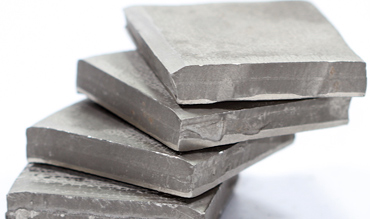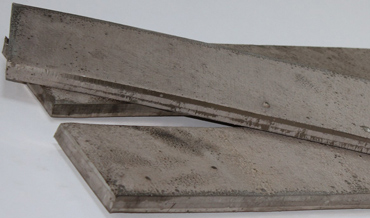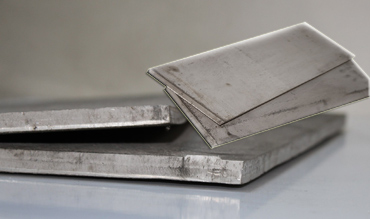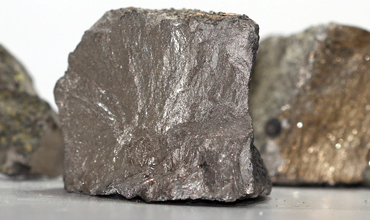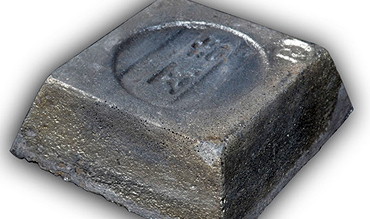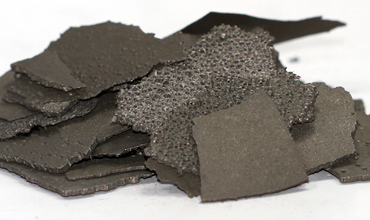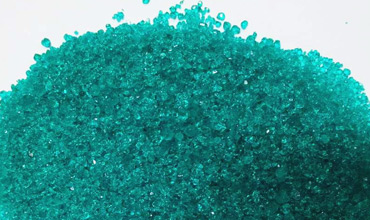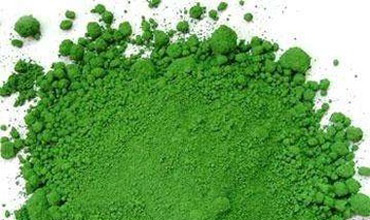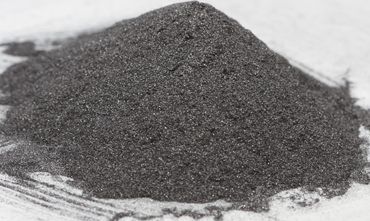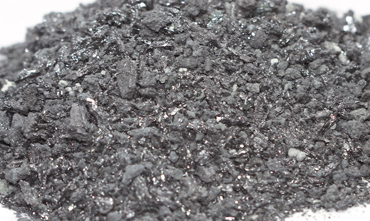- All
- Inoculants
- Non Ferrous Metals
- Ferro Alloys
- Pig Iron
- Noble Alloys
- Base Metals
- Master Metals
- Plating Chemicals
- Others
Ferro Silicon Magnesium
The most common use of Ferro Siliko Magnesium as an additive in the production of cast iron. It has the ability to form nodular graphite for products such as Ductile Cast Iron and Vermicular Cast Iron.
| Melting Point | Symbol | intensity | |||
| 1200-1250 °C | FeSiMg | 6,7 gr/cm3 | |||
| CHEMICAL ANALYSIS | GRAIN SIZE | ||||
| %Si | %Mg | %Ca | %Al | %Re | 1-10 mm 2-20 mm |
| 43-48 | 5,5-6,5 | 1-2 | 0,5 max 0,8 max |
0,5-1 | |
Ferro Silicon Zirconium
Zirconium is a highly reactive element and forms stable compounds with oxygen, nitrogen, sulfur and carbon. Usually available as bars, ingots, strips, wire, shot, sheet and foil.
| Melting Point | Symbol | Intensity | |||
| 1855 °C | FeSiZr | 5,860 gr/cm3 | |||
| CHEMICAL ANALYSIS | GRAIN SIZE | ||||
| %Zr | %Si | %C | 2-6 mm 5-30 mm |
||
| 35-40 | 43-52 | 0,5 max | |||
Ferro Silicon Barium
Barium has a strong affinity for harmful elements such as oxygen and sulfur. FeSiBa is widely used as an oxygen and desulfurizer. It is widely used in ductile iron and is also used in gray cast iron.
| Melting Point | Symbol | Intensity | ||
| 1180-1240 °C | FeSiBa | 3,51 gr/cm3 | ||
| CHEMICAL ANALYSIS | GRAIN SIZE | |||
| %Si | %Ca | %Ba | %Al | 0,2-0,7 mm 0,5-2 mm |
| 70-75 | 1-2 | 2,5 max | 1-2 | |
Ferro Silicium CA Bearing
Ca Bearing has an effect of preventing freckle formation in thin section castings. It has a positive effect on graphite shapes depending on the calcium content it contains. It improves physical and mechanical properties. Usage rate in gray cast iron varies between 2/1000 and 6/1000.
| Melting Point | Symbol | Intensity | |||
| 1190-1240 °C | FeSi | 1,53 gr/cm3 | |||
| CHEMICAL ANALYSIS | GRAIN SIZE | ||||
| %Si | %Ca | %Al | %S | 0,5-2 mm 1-3 mm 2-6 mm 3- 10 mm |
|
| 70-78 | 1-2 | 1-2 | 0,03 max | ||
Metallic Magnesium
Magnesium is one of the most abundant elements in the world and constitutes approximately 2.7% by weight of the earth’s crust, the eighth most abundant element and the sixth metal. Magnesium is the most used metal after iron and aluminum.
| Melting Point | Symbol | Intensity | |||||||
| 650 °C | Met.Mg | 1,74 gr/cm3 | |||||||
| CHEMICAL ANALYSIS | GRAIN SIZE | ||||||||
| %Mg | %Fe | %Si | %Al | %Cu | Pul | ||||
| 99,9 | 0,05 max | 0,03 max | 0,03 max | 0,05 max | |||||
Metallic Manganese
Today, manganese is mostly used in the production of rebar in the iron and steel industry. The purposes of manganese are to establish the balance of manganese sulfur, to remove oxygen and to increase mechanical properties.
| Melting Point | Symbol | Intensity | |||||
| 1244 °C | Met.Mn | 7,46 gr/cm3 | |||||
| CHEMICAL ANALYSIS | GRAIN SIZE | ||||||
| %Mg | %C | %Si | %P | %S | Pul 10-50 mm |
||
| 95 min 97 min 99,7 min |
0,01 max 0,04 max |
1 max | 0,04 max 0,005 max |
0,035 max 0,06 max |
|||
Metallic Chromium
Chromium is one of the main materials that increases the hardness and strength value and provides a strong increase in the resistance of the material against corrosion. It is a very important alloying element for steel.
| Melting Point | Symbol | Intensity |
| 1907 °C | MetCr | 7,19 gr/cm3 |
| CHEMICAL ANALYSIS | GRAIN SIZE | |
| %Cr | Pul | |
| 99,9 | ||
Metallic Molybdenum
It is the element with one of the highest melting temperatures. Unlike most other high melting point metals, its density is only 25% higher than iron. Thermal expansion coefficient is the lowest level of engineering materials, it is one of the elements with the highest thermal conductivity. When molybdenum is added to steel and cast irons, it increases strength, hardenability, weldability, toughness, high temperature resistance and corrosion resistance. In nickel-based alloys, it increases the resistance to both corrosion and high temperature creep deformation.
| Melting Point | Symbol | Intensity | |||||
| 2610 °C | Mo | 10,28 gr/cm3 | |||||
| CHEMICAL ANALYSIS | GRAIN SIZE | ||||||
| %Mo | %C | %S | %Cu | %Fe | BAR / PLATE | ||
| 99,96 | 0,001 | 0,001 | 0,0002 | 0,0132 | |||
Metallic Silicium
Metallic Silicium or silicon is one of the elements with the widest usage area. It increases the castability of the metal and is generally alloyed with aluminum. It supports the ferritic structure in cast iron and contributes to its strength properties. In steel production, it is preferred instead of FerroSilis, especially in alloys where carbon and aluminum are not desired.
| Melting Point | Symbol | Intensity | |||||
| 1414 °C | Met.Si | 2.3290 gr/cm3 | |||||
| CHEMICAL ANALYSIS | GRAIN SIZE | ||||||
| %Mn | %Si | %Fe | %Al | %Ca | 10-100 mm | ||
| 330,2 Grade 441 Grade 553 Grade |
98,5 min 99 min |
0,3 max 0,4 max 0,5 max |
0,3 max 0,4 max 0,5 max |
0,03 max 0,1 max 0,3 max |
|||
Ferro Phosphor
The main uses of Ferro Phosphorus are to increase the fluidity of the liquid metal in casting and to provide abrasion resistance.It can also be used in steel production to increase corrosion resistance.
| Melting Point | Symbol | Intensity |
| 1050-1100 °C | P | 3,3 gr/cm3 |
| CHEMICAL ANALYSIS | GRAIN SIZE | |
| %P | %Si | 10-50 mm 10-100 mm |
| 25 min | 2 max | |
Ferro Manganese L-C
FerroMangan LC is a FerroMangan alloy containing low carbon. Especially in steel production, it is frequently used to adjust the Manganese ratio without increasing the carbon ratio.
| Melting Point | Symbol | Intensity | |||||
| 1.246 °C | FeMn | 7,43 gr/cm3 | |||||
| CHEMICAL ANALYSIS | GRAIN SIZE | ||||||
| %Mn | %C | %Si | %P | %S | 10-25 mm 10-50 mm 10-80 mm |
||
| 75 min 78 min 78-84 min 80-84 min |
0,5 max 1,5 max 2 max 6-7 6-8 |
1 max 1,5 max |
0,10 max 0,15 max 0,20 max 0,25 max |
0,03 max | |||
Ferro Chromium L-C
It is used to correct chromium ratios in the production of low carbon FerroKrom steel or to produce steel with high chromium ratios. It can also be a low-cost alternative to using metallic chrome in some alloys.
| Melting Point | Symbol | Intensity | |||||
| 1.890 °C | FeCr | 7,19 gr/cm3 | |||||
| CHEMICAL ANALYSIS | GRAIN SIZE | ||||||
| %Cr | %C | %Si | %P | %S | 10-50 mm 10-100 mm |
||
| 50-53 62-66 60-65 65-72 |
6-8 0,05 max 0,10 max 0,15 max 0,25 max |
1 max 1,5 max 2 max 3,5 max 5 max |
0,02 max 0,03 max 0,04 max |
0,01 max 0,03 max 0,04 max 0,05 max 0,06 max |
|||
Ferro Silisium Low
Ferrosilicon is used as an alloying element to remove oxygen in liquid metal to improve steel product quality. While ferrosilicon is generally used as a deoxidizer in steel production, it must be low aluminum content as it is also used in cast iron and some alloys with high silica content.
| Melting Point | Symbol | Intensity | |||||
| 1226-1332 °C | FeSi | 3,7 gr/cm3 | |||||
| CHEMICAL ANALYSIS | GRAIN SIZE | ||||||
| %Si | %Al | %C | %P | %S | 10-50 mm 10-100 mm |
||
| 45 min 65 min 75 min |
0,03 max 0,1 max 0,5 max 2 max |
0,1 max 0,2 max |
0,03 max 0,04 max |
0,03 max 0,04 max |
|||
Ferro Chromium H-C
FerroKrom is used to give hardness and strength properties to the material, especially to give it stainless feature.FerroKrom is widely used in steel production. FerroKrom, which is also used in cast irons, also helps to gain properties such as wear resistance, hardness and strength.
| Melting Point | Symbol | Intensity | |||||
| 1.890 °C | FeCr | 7,19 gr/cm3 | |||||
| CHEMICAL ANALYSIS | GRAIN SIZE | ||||||
| %Cr | %C | %Si | %P | %S | 10-50 mm 10-100 mm |
||
| 50-53 62-66 60-65 65-72 |
6-8 0,05 max 0,10 max 0,15 max 0,25 max |
1 max 1,5 max 2 max 3,5 max 5 max |
0,02 max 0,03 max 0,04 max |
0,01 max 0,03 max 0,04 max 0,05 max 0,06 max |
|||
Ferro Silico Manganese
FeSiMn is used as a deoxidant and alloying element in steel production. According to the usage rates of FerroSilis and FerroMangan, FeSiMn can be preferred instead of both. It provides a cost advantage in steel production compared to FerroSilis and FerroMangan consumption.
Ferro Silicium
Ferro Silicium is used in steel production and cast irons to remove oxygen and improve microstructural properties. Silicon mainly increases strength and wear resistance, flexibility, corrosion resistance and low electrical conductivity and magnetic shrinkage properties. Standard FeSi with low Al content, High Purity FeSi and low carbon FeSi products are used as an alloying element in the production of special quality steels used in engine, bearing, impact absorber, steel cord fabric in vehicle tires and stainless steel manufacturing. FerroS ilis is also used in the production of CaSi and Ferro Manganese Hc.
Ferro Manganese H-C
Chemically, it generally behaves similar to iron. Manganese in metal form is oxidized outdoors and rusts in a humid environment. It burns with air or oxygen at high temperatures, similar to iron. FerroMangan is generally used in steel production. Its main use is for hardening of steel, desulfurization by forming MnS compound and also as a deoxidant.FerroMangan is also one of the elements that provide strength properties in gray cast irons.
Steel
The peak type, which is called basic pig and known as steel piki in the casting industry, is used in gray cast iron production and in arc furnaces in steel production. It can be obtained as an intermediate product in integrated plants producing steel from iron ore.
| Melting Point | Symbol | Intensity | |||||
| 1450-1520 °C | Fe | gr/cm3 | |||||
| CHEMICAL ANALYSIS | GRAIN SIZE | ||||||
| %C | %Si | %S | %MN | %P | Külçe | ||
| 3,8-4,6 | 0,7-1,2 | 0,03 max | 0,08 max | 0,05 max | |||
Sfero Pig
Ductile iron peak (Nodular Pig Iron) is used in the production of spheroidal graphite cast iron.The use of ductile iron peak in ductile iron has many advantages in terms of cost and technique. In spheroid peaks, elements such as manganese, sulfur, titanium, chromium and phosphorus should be present in very low proportions.
| Melting Point | Symbol | Intensity | |||||
| 1150 °C | Fe | gr/cm3 | |||||
| CHEMICAL ANALYSIS | GRAIN SIZE | ||||||
| %C | %Si | %P | %Mn | %S | Külçe | ||
| 3,8- 4,6 | 0,7-1 0,8- 1 0,9-1,1 |
0,015 max 0,010 max 0,016-0,018 |
0,030 max | 0,030 max 0,035 max |
|||
Ferro Vanadium
Ferro Vanadium is used as an alloying agent for iron and steel metals as well as for aviation. The most important use of vanadium is as an additive for steel. It is used in the production of rust resistant, spring and high speed tool steels.
| Melting Point | Symbol | Intensity | |||||
| 1900 °C | FeV | 5,4 gr/cm3 | |||||
| CHEMICAL ANALYSIS | GRAIN SIZE | ||||||
| %V | %C | %Si | %P | %Al | 10-50 mm | ||
| 50 min 80 min |
0,25 max | 2 max | 0,1 max | 1,5 max | |||
Ferro Molybdenum
Chemically, it generally behaves similar to iron. It burns with air or oxygen at high temperatures, similar to iron. It decomposes water slowly when it is cold and rapidly when heated. The most important use of manganese is iron and steel production, in which ferro-manganese and silica-manganese iron are used as products.
| Melting Point | Symbol | Intensity | ||||||
| 1665-1715 °C | FeMo | 9 gr/cm3 | ||||||
| CHEMICAL ANALYSIS | GRAIN SIZE | |||||||
| %Mo | %C | %Si | %P | %S | %Cu | 10-50 mm 10-100 mm |
||
| 60 min 65 min 70 min |
0,1 max | 1,5 max | 0,05 max | 0,01 max | 0,5 max | |||
Ferro Niobium
Ferroniobium is the main source for niobium alloy of high strength low alloy steel. For alloying with steel, ferroniobium is added to molten steel before casting. Ferro Niobium is a desirable compound as it can effectively double the strength and durability of the alloy and reduce the weight of the alloy.
| Melting Point | Symbol | Intensity | |||||
| 1530-1580 °C | FeNb | 8,57 gr/cm3 | |||||
| CHEMICAL ANALYSIS | GRAIN SIZE | ||||||
| %Nb | %C | %Si | %P | %Al | 10-50 mm | ||
| 63-70 | 0,2 max | 2,5 max | 0,2 max | 2,5 max | |||
Ferro Titanium
Ferro Titanium is used as a Cleaning Agent in Steel Production as it is highly reactive with Sulfur, Carbon, Oxygen and Nitrogen. It is also used for deoxidation, desulfurization and denitrification.
| Melting Point | Symbol | Intensity | |||||
| 1070-1335 °C | FeTi | 5,4 gr/cm3 | |||||
| CHEMICAL ANALYSIS | GRAIN SIZE | ||||||
| %Ti | %Al | %C | %S | %V | 10-50 mm 10-100 mm |
||
| 30-40 60-73 |
0,5 max 4,5 max 8 max |
0,1 max 0,5 max |
0,05 max | 3 max | |||
Ferro Boron
Ferro Boron is typically incorporated into steel to provide a solid form and high strength. Ferro Boron is called one of the most useful “precious ferro alloys”.
| Melting Point | Symbol | Intensity | |||||
| 1500 °C | FeB | 3,3 gr/cm3 | |||||
| CHEMICAL ANALYSIS | GRAIN SIZE | ||||||
| %B | %Al | %Si | %C | %S | 10-50 mm | ||
| 16 min | 0,5 max | 2 max | 0,5 max | 0,01 max | |||
Ferro Wolfram(Tungsten)
By combining iron with tungsten, tendencies towards brittleness are overcome. Ferro Tungsten is often an essential component of popular super alloys.
| Melting Point | Symbol | Intensity | |||||||||
| 1650 – 2100 °C | FeW | 5,4 gr/cm3 | |||||||||
| CHEMICAL ANALYSIS | GRAIN SIZE | ||||||||||
| %W | %Si | %P | %C | %S | % Mn | %Cu | 10-50 mm | ||||
| 70 min 75 min |
0,5 max | 0,06 max | 0,2 max | 0,1 max | 0,25 max | 0,15 max | |||||
Tin (Rod)
Tin is a soft, ductile, silvery-white metallic element that can be easily beaten and shaped. Tin is mainly found in cassiterite and stanine ores. It is obtained by roasting cassiterite with carbon in an oven.
| Melting Point | Symbol | Intensity | ||
| 232 °C | Sn | 7,3 gr/cm3 | ||
| CHEMICAL ANALYSIS | GRAIN SIZE | |||
| %Sn | %Pb | INGOT / BAR | ||
| 99,96 min 99,97 min |
0,001-0,003 0,005-0,01 |
|||
Tin (Anot)
Tin is a soft, ductile, silvery-white metallic element that can be easily beaten and shaped. Tin is mainly found in cassiterite and stanine ores. It is obtained by roasting cassiterite with carbon in an oven.
| Melting Point | Symbol | Intensity | ||
| 232 °C | Sn | 7,3 gr/cm3 | ||
| CHEMICAL ANALYSIS | GRAIN SIZE | |||
| %Sn | %Pb | INGOT / BAR | ||
| 99,96 min 99,97 min |
0,001-0,003 0,005-0,01 |
|||
Tin (Ingot)
Tin is a soft, ductile, silvery-white metallic element that can be easily beaten and shaped. Tin is mainly found in cassiterite and stanine ores. It is obtained by roasting cassiterite with carbon in an oven.
| Melting Point | Symbol | Intensity | ||
| 232 °C | Sn | 7,3 gr/cm3 | ||
| CHEMICAL ANALYSIS | GRAIN SIZE | |||
| %Sn | %Pb | INGOT / BAR | ||
| 99,96 min 99,97 min |
0,001-0,003 0,005-0,01 |
|||
Nickel 10×10
Nickel, a shiny silver-colored metal with a very hard but fragile structure, has held an important place in human life throughout history. Nickel is used in many industrial and end-user products such as stainless steel, magnets, coins and special alloys.
| Melting Point | Symbol | Intensity | |||
| 1455 °C | Ni | 8,89 gr/cm3 | |||
| CHEMICAL ANALYSIS | GRAIN SIZE | ||||
| %Ni | %Co | %Fe | 2,5×2,5 cm 5×5 cm 10×10 cm 100×100 mm (uncut) |
||
| 99,97 min | 0,0001 min | 0,005 max | |||
Nickel 2.5×2.5
Nickel, a shiny silver-colored metal with a very hard but fragile structure, has held an important place in human life throughout history. Nickel is used in many industrial and end-user products such as stainless steel, magnets, coins and special alloys.
| Melting Point | Symbol | Intensity | |||
| 1455 °C | Ni | 8,89 gr/cm3 | |||
| CHEMICAL ANALYSIS | GRAIN SIZE | ||||
| %Ni | %Co | %Fe | 2,5×2,5 cm 5×5 cm 10×10 cm 100×100 mm (uncut) |
||
| 99,97 min | 0,0001 min | 0,005 max | |||
Nickel 5×5
Nickel, a shiny silver-colored metal with a very hard but fragile structure, has held an important place in human life throughout history. Nickel is used in many industrial and end-user products such as stainless steel, magnets, coins and special alloys.
| Melting Point | Symbol | Intensity | |||
| 1455 °C | Ni | 8,89 gr/cm3 | |||
| CHEMICAL ANALYSIS | GRAIN SIZE | ||||
| %Ni | %Co | %Fe | 2,5×2,5 cm 5×5 cm 10×10 cm 100×100 mm (uncut) |
||
| 99,97 min | 0,0001 min | 0,005 max | |||
Nickel Anode (10×60)
Nickel, a shiny silver-colored metal with a very hard but fragile structure, has held an important place in human life throughout history. Nickel is used in many industrial and end-user products such as stainless steel, magnets, coins and special alloys.
| Melting Point | Symbol | Intensity | |||
| 1455 °C | Ni | 8,89 gr/cm3 | |||
| CHEMICAL ANALYSIS | GRAIN SIZE | ||||
| %Ni | %Co | %Fe | 2,5×2,5 cm 5×5 cm 10×10 cm 100×100 mm (uncut) |
||
| 99,97 min | 0,0001 min | 0,005 max | |||
Nickel Anode (20×60)
Nickel, a shiny silver-colored metal with a very hard but fragile structure, has held an important place in human life throughout history. Nickel is used in many industrial and end-user products such as stainless steel, magnets, coins and special alloys.
| Melting Point | Symbol | Intensity | |||
| 1455 °C | Ni | 8,89 gr/cm3 | |||
| CHEMICAL ANALYSIS | GRAIN SIZE | ||||
| %Ni | %Co | %Fe | 2,5×2,5 cm 5×5 cm 10×10 cm 100×100 mm (uncut) |
||
| 99,97 min | 0,0001 min | 0,005 max | |||
Antimony
Antimony is a strategically important metal today. Metallurgically, it is included in the non-ferrous metals group. Metals such as tin and lead can be substantially hardened by adding antimony. It is used as the raw material of many industries due to its low heat and electrical permeability, its use in alloys, and some features such as hardening and corrosion prevention.
| Melting Pointi | Symbol | Intensity | ||
| 630°C | Sb | 6,68 gr/cm3 | ||
| CHEMICAL ANALYSIS | GRAIN SIZE | |||
| %Sb | %As | %Se | ingot | |
| 99,65 min | 0,15 max | 0,005 max | ||
Cobalt
Cobalt is an element with low minerals in nature. It is very difficult to obtain it in pure form due to the difficulty of separating it from other elements and requires many processes. Cobalt is used in a variety of applications such as super alloys, corrosion resistant alloy, high speed tool steels and magnets.
| Melting Point | Symbol | Intensity | ||||||
| 1495 °C | Co | 8,9 gr/cm3 | ||||||
| CHEMICAL ANALYSIS | GRAIN SIZE | |||||||
| %Co | %Ni | %Fe | %Cu | %Si | %Al | PUL | ||
| 99,94 | 50 ppm | 12 ppm | 9 ppm | 2 ppm | 3 ppm | |||
Nickel Sulphate
Nickel sulfate is a metal compound with the formula NiSO4. The non-hydrated form of nickel sulfate has a yellowish color at room temperature, while the hexahydrate and heptahydrate form has a blue color resembling copper sulfate.It dissolves very well in water. In daily life, coins, keys, key chains, pens, fountain pens, lighters, purse handles, umbrellas, curlers, hair clips, eyeglasses frame, lipstick container, powder holder, pins, safety pins, sewing pins, scissors, nails, hammers, screwdrivers etc. .. is used.
| Melting Point | Symbol | Intensity | ||||||||||||
| 53 °C | NiSO4 | 3,55 gr/cm³ | ||||||||||||
| CHEMICAL ANALYSIS | ||||||||||||||
| Ni % | Cl ppm | Mg ppm | Na ppm | Ca ppm | Co ppm | Fe ppm | As ppm | |||||||
| 22,3 | 3 | 1 | 5 | 1 | 2 | 1 | 1 | |||||||
Nickel Chloride
Nickel(II) chloride is the chemical compound NiCl². The anhydrous salt is yellow, but the more familiar hydrate NiCl² 6H²O is green. Nickel(II) chloride is, in various ways, the most important source of nickel for chemical synthesis. Nickel chloride liquefy by absorbing moisture from the air to form a solution.
| Melting Point | Symbol | Intensity | ||||||||||||
| 1.001 °C | NiCl² | 3,55 g/cm³ | ||||||||||||
| CHEMICAL ANALYSIS | ||||||||||||||
| Ni % | As % max | Cd % max | Co % max | Cu % max | Fe % max | Pb % max | Zn % max | |||||||
| 24 | 0,001 | 0,001 | 0,001 | 0,001 | 0,001 | 0,001 | 0,001 | |||||||
Graphite Powder
Graphite alone or mixed with other materials, shaped and used in a wide range of areas. It uses graphite as a lubricant in the electrical industry, foundry, painting, electronic equipment, insulating plants, motors, pencil making and many other areas.
| Melting Point | Symbol | Intensity | |||
| 1650 – 2100 °C | C | 5,4 gr/cm3 | |||
| CHEMICAL ANALYSIS | TANE BOYUTU | ||||
| %C | %S | %Ash | 150 mesh | ||
| 80-85 | 0,05 max | 10-12 | |||
Carbon Recarburizer (CPC)
It is used in the processing of iron and alloys. It is used in the control of nuclear reactions in steel making, in the coloring of tires, in the plastic industry, in obtaining paint pigments, in the dehydration of liquid oils.
| Melting Point | Symbol | Intensity | GRAIN SIZE | |||||
| 1.530 | FeC | 7,86 g/cm3 | 1-5 mm 0,5-4mm |
|||||
| CHEMICAL ANALYSIS | ||||||||
| %C | %Kül | %S | %Nem | %N | %H | %O | %Ash | %Vol. |
| 99,15 99,1-99,6 96 |
0,5 | 0,02 0,8-0,95 1 max 0,02 |
0,1 0,05-0,2 0,2-0,5 max |
0,01 1 max 0,02 |
0,06 0,08 |
0,1 | 0,3-0,45 0,25-0,45 |
0,2-0,25 0,2-0,5 |
Carbon Recarburizer (GPC)
It is used in the processing of iron and alloys. It is used in the control of nuclear reactions in steel making, in the coloring of tires, in the plastic industry, in obtaining paint pigments, in the dehydration of liquid oils.
| Melting Point | Symbol | Intensity | TGRAIN SIZE | |||||
| 1.530 | FeC | 7,86 g/cm3 | 1-5 mm 0,5-4mm |
|||||
| CHEMICAL ANALYSIS | ||||||||
| %C | %Kül | %S | %Nem | %N | %H | %O | %Ash | %Vol. |
| 0,5 | 0,02 0,8-0,95 1 max 0,02 |
0,1 0,05-0,2 0,2-0,5 max |
0,01 1 max 0,02 |
0,06 0,08 |
0,1 | 0,3-0,45 0,25-0,45 |
0,2-0,25 0,2-0,5 |
|
Chromite Sand
Chromite sand (FeCr2O4), a black angular sand, is highly heat resistant and chemically non-reactive and has good thermal stability and excellent cooling properties. It is used in mold and core applications in the foundry industry.Chromite has a wide range of uses in batteries, paint industry, coloring pigments, petroleum, ceramic and glass industries.
AFS 45-50
Perlite
Perlite is derived from the word perla, which means the same because of its pearl resemblance. Perlite used in the construction, agriculture and industry sectors serves many purposes. Perlite is important with its low density, physical flexibility, chemical stability, low sound permeability and fire resistance.
| CHEMICAL ANALYSIS | |||||||
| Melting Point | Symbol | Intensity | %SiO2 | %Al2O3 | %K2O | %Na2O | GRAIN SIZE |
| 1260 °C | Yok | gr/cm3 | 68-75 | 11-16 | 3-5 | 2-5 | 0,6-1,2 mm 0,8-2,30 mm |
Silicon Carbide
SiC is a ceramic material with exceptional hardness that is infused only with diamond, cubic boron nitride and boron carbide. The material is abrasion resistant and chemically inert to all alkalis and acids, as well as resistant to high temperatures. These properties make Silicon Carbide a superior abrasive and ceramic material for use in extreme operating conditions. Components are used in chemical plants, mills, expanders or constrictors or nozzles.
| Melting Point | Symbol | Intensity |
| 2730 °C | SiC | 3,21 gr/cm3 |
| CHEMICAL ANALYSIS | GRAIN SIZE | |
| %SiC | 0-10 mm 2-10 mm Briket |
|
| 90 min | ||
